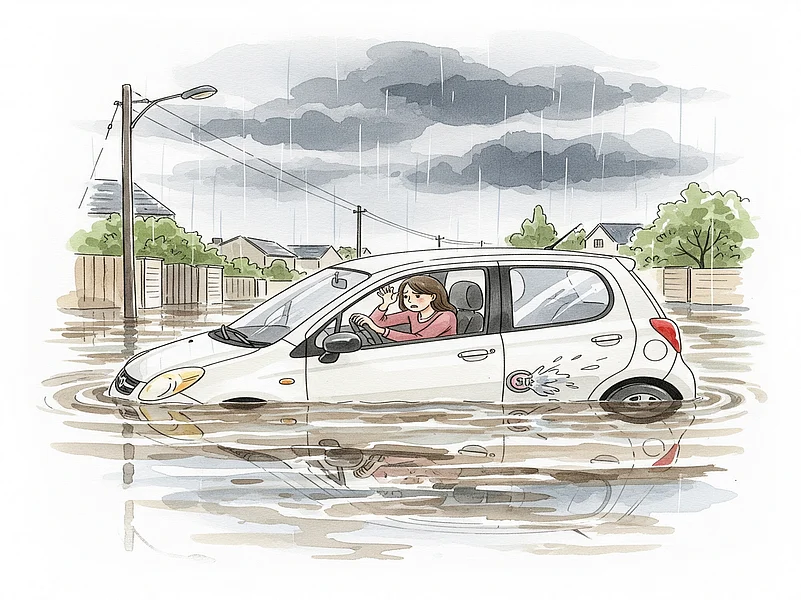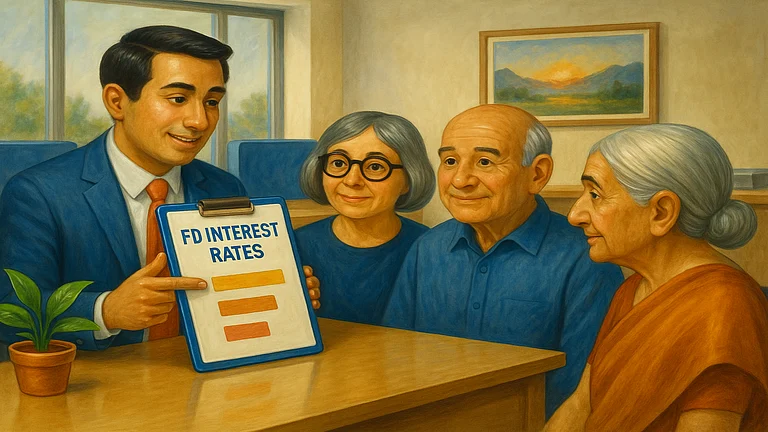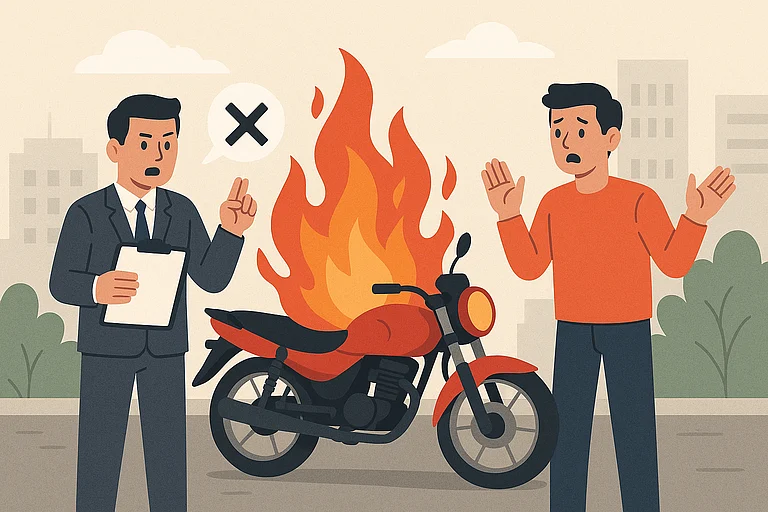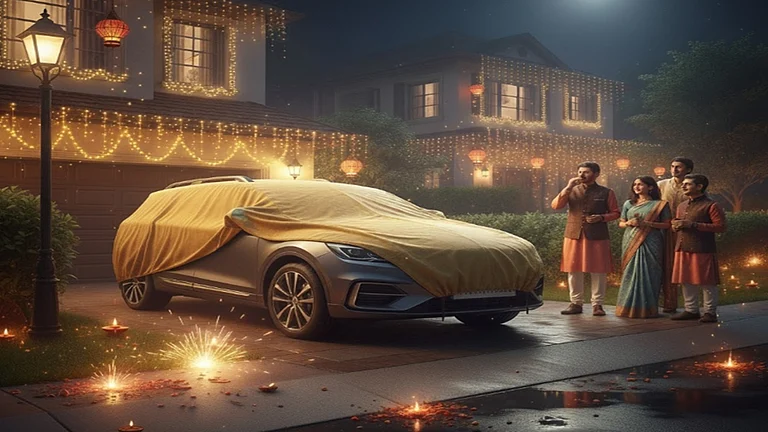Auto insurance is mandatory by law, so we all buy a policy. But do we know what all is covered in that, how to utilise it fully, how to use the no-claim bonus, and what different innovative covers are available under auto insurance now? Tapan Singhel, managing director and chief executive officer of Bajaj Allianz General Insurance, shares his insights on the key aspects of auto insurance and how to make the right decisions to cover your vehicle-related risks. He also sheds light on current and future innovations. Here are the edited excerpts from the interview.
Most people end up buying only the third-party auto insurance cover because it is mandatory by law. Do you think that is enough?
It is a fact that it is mandatory by law to have motor insurance before you get on the public road. Despite that it is mandatory, everyone doesn't have insurance. You will be surprised to know that more than 46 per cent of vehicles on the road have no insurance cover.
What people don't realise is that on a two-wheeler we get claims close to Rs 15-20 crore. Can you believe it? A two-wheeler costs about Rs 70,000. So a claim for Rs 15 crore looks ridiculous. But in India, if you hit someone, causing a fatal accident or a serious injury, you are liable to pay compensation to that person. Even if you are not driving, you are liable to pay compensation because the vehicle is yours.
The compensation depends on the award by the court and is unlimited in terms of the quantum of liability and it can be filed at any point of time. In the Rs 15 crore claim case I talked about, the person who met with an accident was a techie. On his salary, they (the judiciary) put a multiplier of the number of (working) years left and calculated the amount. So, it can be any amount of money in other such cases.
Now, imagine if you don't have a cover, you will have to pay that money (from your own pocket). But as an individual, if you do not have Rs 15 crore to pay, even if you sell your house and become completely insolvent, you are still liable to pay a couple of crores. On the other hand, the person or his family will not get adequate compensation. It's a very bad situation to be in.
So, everyone must have a cover. The first point is that you do not know what liability may arise against you. It doesn't matter what vehicle you have. The second point is the third-party or TP liability cover, as we call it, which is mandatory by law to have. That is a basic cover.
But if I have to take a cover, I would actually take a comprehensive cover and along with it a roadside assistance cover. Why is that? Let's say you are driving on the road. If a tyre has a puncture, you may not want to get down to change it? You call up the insurance company if you have a roadside assistance cover and then (ask them to) send somebody to change your tyre. If your vehicle runs out of fuel, then you also don't have to worry. Just call the insurance company, they can provide you with emergency fuel. They offer these facilities other than just paying in case of an accident. So, in that way vehicle insurance is exciting and you should have a good cover.
I have seen floods in Bengaluru and Chennai, where a lot of vehicles got damaged due to excess water. Imagine you bought an expensive car and because of floods and no fault of yours, it goes for total loss overnight. You lose the entire amount of money and if you have taken a loan, then it might become a big problem. As I have always said, compared to the value of the car, the premium you pay is insignificant. So, be well covered. Take a comprehensive cover and look for add-ons.
The general insurance industry has seen a lot of innovations lately. So what are the riders that you recommend to our viewers, apart from roadside assistance?
Roadside assistance is a crucial. Don't even think of having a vehicle without (it) because, in times of small irritants, you (will) have somebody to help you out.
The next is the engine protector cover. As floods have become common, cities are getting choked, and I see losses due to flooding. Most of the modern cars stop with some water coming in. Our natural tendency is if the vehicle stops, we try to start it again and we crank it a couple of times, which leads to engine damage. Technically, if you are moving into water and if your car stops, just call for assistance and let the vehicle be towed. Don't try to start it again because the engine gets damaged due to that. As per the insurance policy, it is a consequential loss for which the claim does not get paid, and the situation can lead to a dispute.
The third cover, which makes sense, is depreciation insurance, if your car is new. If you look at the plastic parts, there is 50 per cent depreciation. So, take a cover for that because, in a new car the bumpers and similar parts are very expensive. So, a 50 per cent depreciation means a lot of money if you don't have this cover. Look at the cost of the add-on cover and the age of the vehicle to see if it is worth it or not. At least for the first couple of years, I strongly recommend depreciation coverage.
I can go on and on about the others, but the above three are the most critical.
There are certain jargon that people do not understand because of which they may not be able to make the right decisions. Some of them the insured declared value (IDV) and no-claim bonus (NCB). Could you explain these two terms?
When you buy a new car, the value is very clear, and that's the sum insured. However, as the car ages, deciding the right value for it becomes a problem. IDV is a process that helps determine the value of the car.
The industry body has a predetermined formula to calculate the IDV. It is the value of a car for the total sum insured. If the car gets stolen or is a total loss, that is the amount which shall be paid. So, don't try to lower the IDV from what is suggested to you. The differential in price will not be much.
Sometimes when you ask for a lower premium and if the agent is not very fair, he or she may reduce your IDV and your premium may get lower. So, always look at the value of the car derived by the formula and ask for that.
Let me give you the context of all these add-ons and why it is not part of the policy. In India, the pricing was freed in the year 2007. Before that, it was under tariff. So, the original motor policy is the same for all the companies for many years. In that, the depreciation of plastic (parts) is at 50 per cent. Those were the times when the car and the bumper were all metal. There was nothing called plastic, and glass made zero difference. But in today's time, most of the car is (made of) fiber, which is mostly plastic.
As for NCB, if you don't make a claim, you get a rebate in premium. If you make a claim, then there is a loading on the premium. That again comes from those earlier times of tariff, but still continues because the wording is the same. Insurance companies have add-ons to make the policy more relevant in today's time.
Let's say I have four or five years of no claims, my NCB can go up to 50 per cent. So, let's have a 50 per cent reduction in premium. If I have a small claim of let's say Rs 2,500 or Rs 5,000 and I claim that money, then my entire NCB, 50 per cent, which I was getting as a rebate on my premium, disappears. So, when you have a small claim, always check that if you have a no-claim period, are you actually getting more benefit in terms of the premium that you are saving. Would you want to make the small claim or would you be self-insured for that because the premium saving is high?
The way NCB operates is that it keeps on accumulating. But if you have one claim, the NCB starts moving down on that basis. So, if you have a strong policy that has a huge amount of NCB, please see that when you have a small claim, is it worth taking that or not?
A lot of people complain that auto insurance claims take a lot of time to settle. So what is the way forward on this? How can this friction be reduced through technology?
From an insurance industry perspective, the claims get settled and we were the first to innovate on this about 22 years back. The cashless (system) was brought in, so when you go to the garage, you don't have to pay as the insurance company would pay to the garage directly. So, in a way, the insurance industry has already agreed to pay the money.
So, the (longer) settlement time is not because of the insurance industry as such. When we study the reason for the delay, most of it is because of the (lack of) availability of spare parts or garage overload, due to which your vehicle gets stuck.
Then we studied and saw that about 70-80 per cent of the claims are not very complicated. They are about a bumper loss, a windscreen loss, or a door getting damaged, which may not have involved a major accident. So we thought, let's give some flexibility to the client rather than insure. We came out with a solution, which was also one of the first. It is that you get out of the car, click pictures on the spot, upload it and we transfer money to your account within 15-20 minutes. You already got the claim amount, and it's not a major damage that your car cannot move, so you may decide to go (out) on the weekend by picking up a garage that can deliver immediately or the one that has the spare parts. So if it is not an engine loss, you can upload pictures and get claims immediately.
We keep on innovating to see how we solve the issues that come.
What other innovations can we expect in the auto insurance domain going forward?
An interesting one coming up is (related to) electric vehicles (EV), which have charging point issues. You have to have a charging point but that can get damaged. So, we are trying to see how we solve that. Or if your battery runs out, how do we take care of that (situation) in terms of providing assistance. Or if the battery gets stolen, how do we immediately try and replace that? We already have a cover for all this.
We have provided solutions for whatever new kinds of risks came in. Innovations keep happening over time as customer faces new issues. My personal feeling is that the day is not far when we will move to drone taxis. It may sound a bit far-fetched right now, but in Dubai, you already have them.
I read a newspaper article in which an airline is saying that they're going to run a Connaught Place to Gurugram flight service, which would be a vertical take-off. So if the private players are allowed to have the licences, the day is not far when you would prefer to have a drone dropping you from one end to another. Then we shall innovate to cover those risks which will be there. So, there's constant evolution.
What would you recommend for the segment that uses own vehicles only on the weekends and uses public transport otherwise? Would you recommend a comprehensive policy to them as well?
Again, we were among the first to bring this product' pay as you drive', which means if you feel that you only drive 100 kilometres in a year, then buy a cover only for that. You can define the number of kilometres, but if it falls short, you can take a top-up cover. So that can be done.
We are also coming up with a mobility cover. Let's say from your home, you drive to the metro station, then you take the metro rail, and then maybe a taxi or auto rickshaw to go to your office or a crowded place. Here, you are using different modes of transport. So, our mobility cover will give a comprehensive cover to individuals, irrespective of the vehicle being used.
As risks change, the insurance industry keeps coming out with innovations. I think, the customers, who do not drive much, can do immediately is login when they visit our website. They will be able to get this cover for the kilometres they drive.
Transcribed by Versha Jain

















